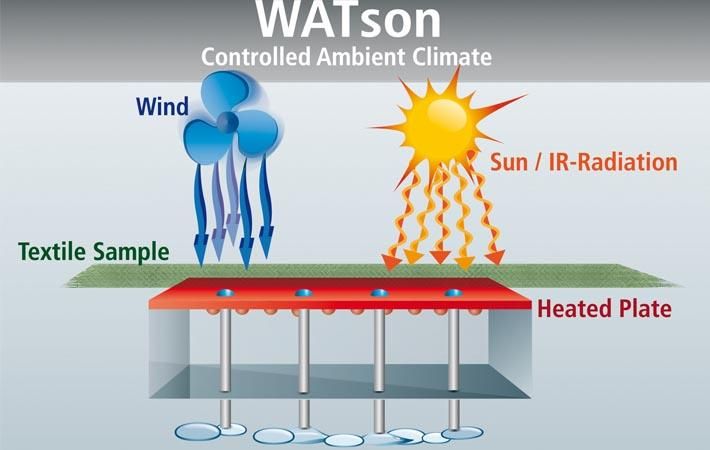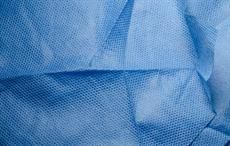Hohenstein Institut für Textilinnovation (HIT) has developed heat release tester WATson - to be used for physical measuring of the cooling performance of textiles. Until now there is no correlation of the data obtained using WATson with actual wearer trials and thermophysiological models. The textiles industry needs such an evaluation system.
Such an evaluation system is required for the goal-oriented development of cooling textiles - in other words a system capable of measuring the quality of a cooling process, for example temperature range, duration, impact on the heat / humidity balance of the wearer.Hohenstein Institut fur Textilinnovation (HIT) has developed heat release tester WATson - to be used for physical measuring of the cooling performance of textiles. Until now there is no correlation of the data obtained using WATson with actual wearer trials and thermophysiological models. The textiles industry needs such an evaluation system.#
With these requirements in mind, HIT then embarked on a research project to develop a thermophysiological evaluation system for the textiles industry. The aim was for the new evaluation system to compare the results of the WATson heat loss tester with data from experiments on subjects in a climate chamber under different ambient conditions.
Research project involved characterisation of cooling textiles with the heat loss tester, monitoring wearer trials in a climate chamber examining different cooling textiles and a variety of ambient conditions (temperature, humidity, wind etc), examination of the cooling effect of textiles under consideration of different parts of the body and examination of the cooling effect of textiles with different levels of physical exertion.
Following analysis and correlation of the data from the various work stages, the intention was to provide industry with an efficient thermophysiological system for the evaluation of cooling textiles using WATson.
German manufacturers of cooling textiles benefit directly from the evaluation system developed on this project aimed at the objective determination and assessment of the cooling performance of textiles. This project is of major economic benefit to Germany's textile industry, as companies will only succeed in improving their competitive ability if their products actually offer the functionality required by customers.
In recent years there has been a steady increase in the demands made on the properties of function, sports and workwear textiles. In order to achieve a cooling effect, special textile constructions are developed, which increase the sweat evaporation and thus the cooling of the body.
There are already various methods to characterise such properties. But they are not linked to thermophysiological methods and models, which are capable to objectively determinate comfort levels. The desire has been for a practical method that not only takes account of physical measurement data, but also the resulting cooling effect observed in controlled wearer trials in a climate chamber.
This process is however very time-consuming, while also requiring a large group of test subjects, so ultimately leading to higher product prices. In short: A level of effort that is neither affordable, nor feasible for small and medium-sized enterprises. (SV)
Fibre2Fashion News Desk – India


